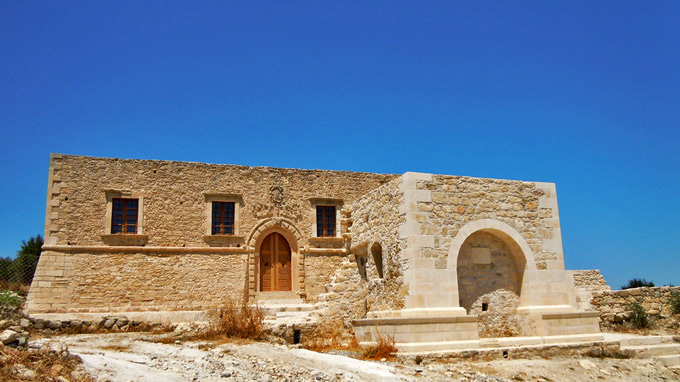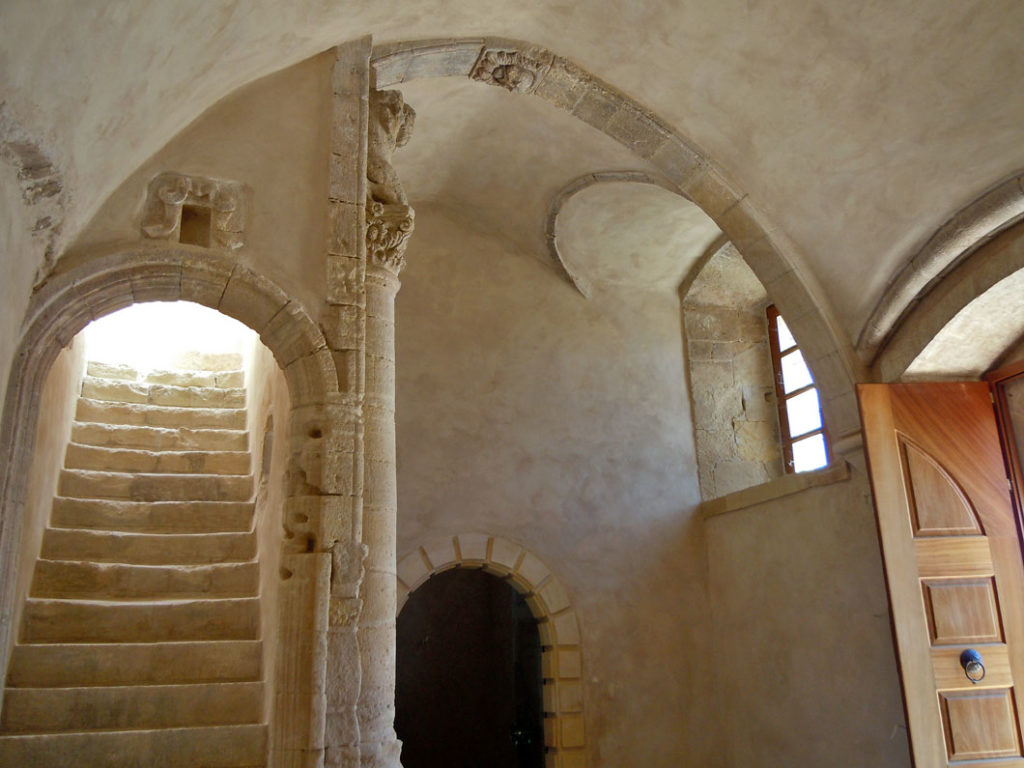
Venetian villa De Mezzo – Etia – Sitia
The Venetian villa Dei Mezzo, also known as the Seragio by the locals, is a once three-storied tower located at the village of Etia in eastern Crete, in the region of Sitia. The name of the village translates to “willow tree” in Greek even though it is uncertain how the connection was made.
Nearby we find the villages of Papagiannades an Armenoi. This was the location of the fief of the noble Venetian Dei Mezzo family, in the uphill hinterland of Sitia. The villa was considered as the most splendid private Venetian building of the Cretan countryside in its time and is mentioned in the travel journals of English Admiral T. B. Spratt.

It was built in the late 15th century and was preserved intact until 1828. It has a rectangular shape and was surrounded by a large courtyard, which used to have a fortification wall around it. A majestic entrance bearing the coat-of-arms of the Dei Mezzo family, led into the courtyard. Near the entrance, there is a fountain which was supplied with water from an area 1,5 km away, via an aqueduct system. Most of the indoor areas of villa Dei Mezzo were vaulted and adorned with carved decorations. An inscription incorporated into the lintel of the hall that led to the upper stories, which read: “Enter, your Lordship, with no shyness” (Intra vostra signoria senza rispetto, in Italian) strongly suggests that the owner of the villa must have been friendly and hospitable.
When the island was conquered by the Turks, the villa was handed over to a high-ranking Turkish official. The second storey, unfortunately, collapsed during the revolt of 1828 and the first storey in 1897. It is believed that the materials were used then for the construction of a church in the village. The regional office of the Archaeology Department has restored the villa and listed it as a protected monument. Unfortunately, nowadays it is not open to visitors, as there is no keeper employed. However, one can admire the outside of the building and wander among the ruins of the village of Etia, where some reconstruction works are underway.